Six-Week Strength Programme To Build A Strong Body
Focus on big moves to make significant strength gains in just six weeks
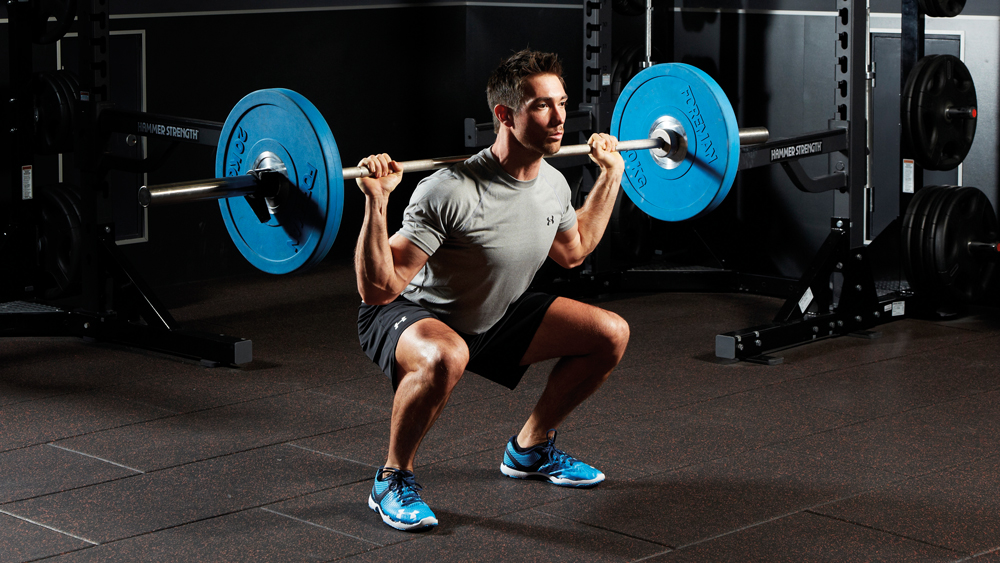
This three-workout strength programme focuses on three key lifts, the back squat, deadlift and overhead press. Each one is the star of a workout, and we’ve selected those moves because they’re the most effective for building whole-body strength. The supporting cast includes moves that will prime your body to perform big lifts, as well as assistance exercises that either target key muscle groups in the big lifts or develop the core strength you need to be able to lift with solid form.
Follow the set, rep and rest instructions for each move to get the maximum benefit. Do each workout once a week for six weeks, aiming to increase the amount you lift each time you complete the workout. And always make a note of how much you lift in each
Workout 1: Squat
1 Kettlebell goblet squat
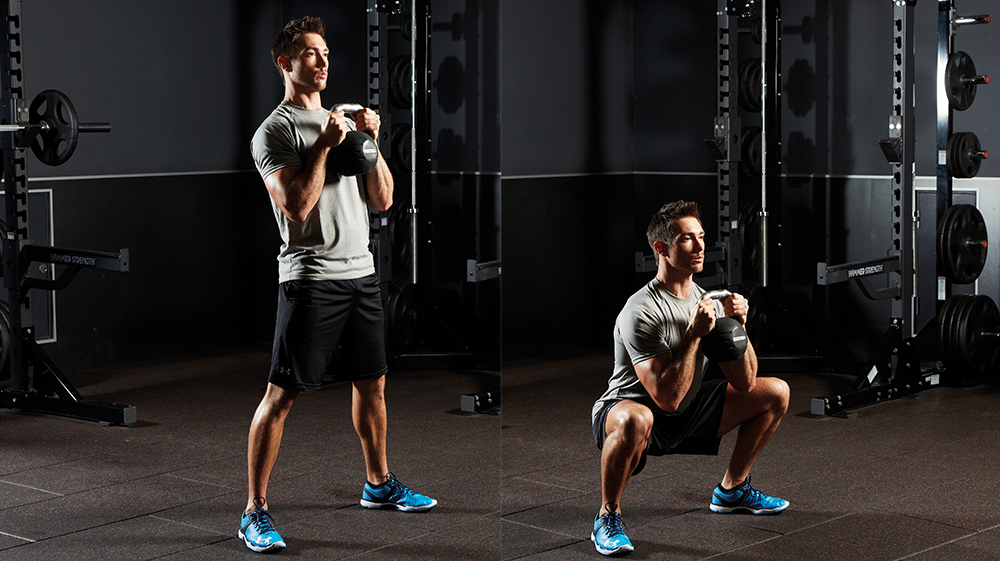
Sets 3 Reps 10 Rest 45sec
Why This will get you moving in the right way to gear up for your main lift of the session, the barbell squat. It’s a fairly light way to ease into the session, which will allow you to focus on depth. Having the weight in front of you also encourages you to keep an upright torso.
How Hold a kettlebell by the horns in front of your chest. Simultaneously hinge at the knees and hips to lower as far as you can, keeping your weight on your heels and mid-foot. Return to the start and repeat.
2 Jump squat
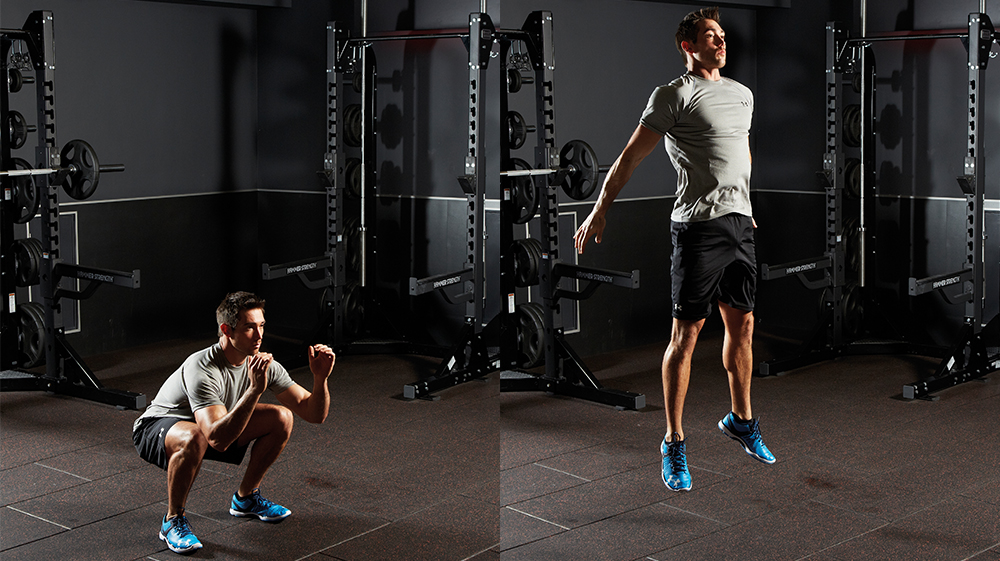
Sets 3 Reps 5 Rest 60sec
Why This explosive move will activate your fast-twitch muscle fibres, priming your nervous system so you get maximum muscle fibre recruitment when you perform the heavy sets on the next exercise. The rep count is low because this is about quality of movement rather than exhausting your target muscles.
Get the Coach Newsletter
Sign up for workout ideas, training advice, reviews of the latest gear and more.
How With feet shoulder-width apart, squat down, then explode up to jump as high as you can. Land softly and go straight into the next rep.
3 Back squat
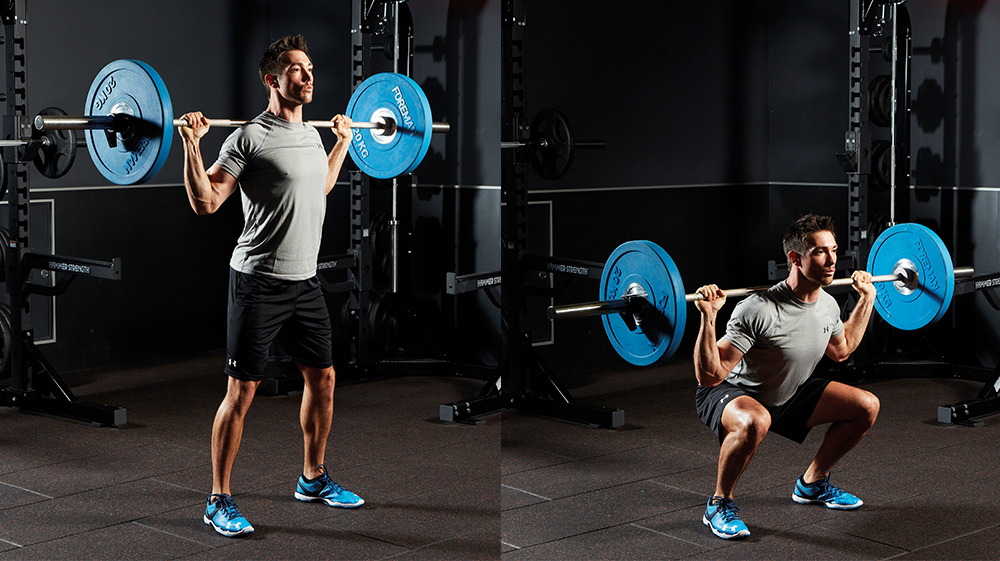
Sets 4 Reps 10, 8, 6, 4 Rest 90sec-2min
Why This is the main move of the workout, so it demands maximum focus. The squat is one of the most effective strength-building exercises you can do. The rep count is lower with each set so you should aim to increase the weight you lift in each set so that you can only just complete the reps. This means you do some hard work in the valuable strength-building lower rep range. You get more rest than usual to allow your body more recovery so you can lift the maximum weight possible.
How With the bar on your back and your feet shoulder-width apart, simultaneously bend at the hips and knees to lower towards the floor. Squat as low as you can, keeping your weight on your heels and mid-foot and your chest up. Push your elbows forwards to engage your lats and prevent your spine from bending.
4 Plank
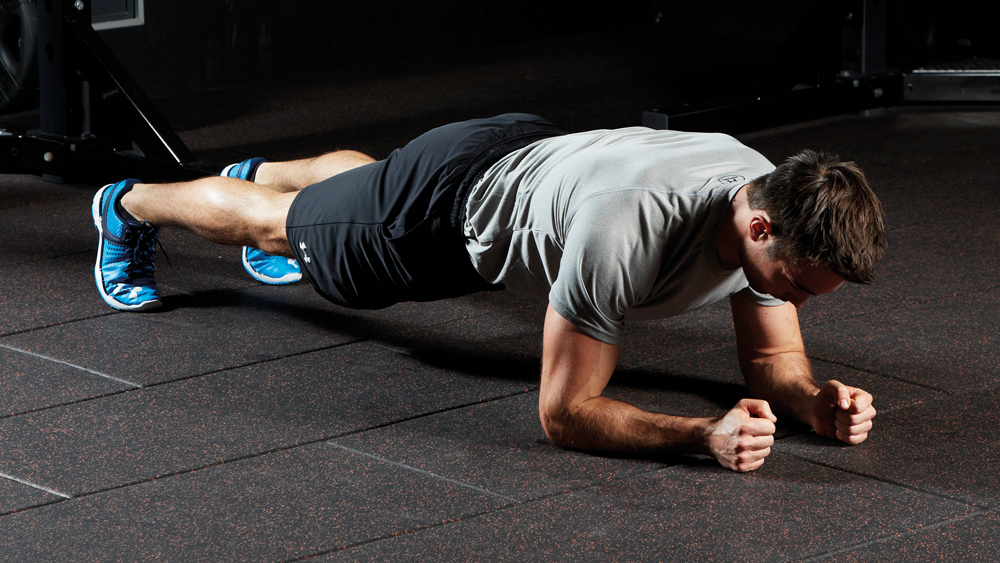
Sets 3 Time 60sec Rest 60sec
Why A heavy squat requires a strong core to keep your torso upright. This move will build strength and stability across the whole of your abs, lower back and deep-lying core muscles.
How Get into position with your body in a straight line from head to heels and your elbows directly below your shoulders. If your hips are too high that will take tension off the core muscles. If they are too low it will put strain on your lower back.
Workout 2: Deadlift
1 Kettlebell swing
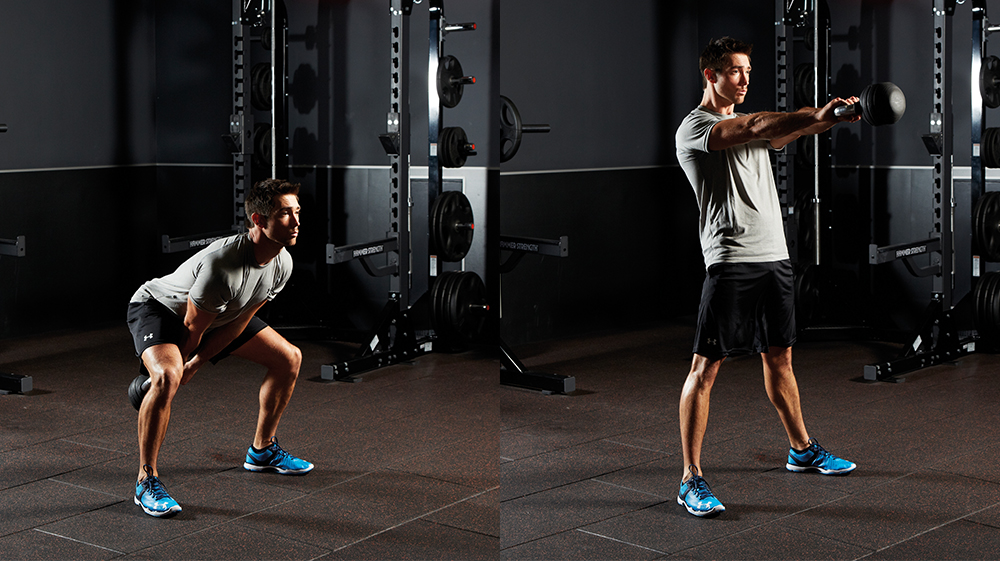
Sets 3 Reps 10 Rest 45sec
Why When done properly, the kettlebell swing is a hip hinge rather than a squatting movement. Drilling that movement pattern will help you engage your hamstrings and maintain good form during a heavy deadlift.
How Hold the bell in two hands, swing it back between your legs and then straighten up with a hip snap. The key to a good swing is hingeing at the hips and straightening up powerfully so that the hip drive, rather than your arms, is responsible for moving the weight.
2 Deadlift

Sets 4 Reps 10, 8, 6, 4 Rest 90sec-2min
Why The deadlift is arguably the most effective whole-body strength and muscle builder. It also focuses on your posterior chain - the muscles on the back of your body, which many people leave undertrained but play a key role in promoting good posture and keeping you injury-free.
How Set up so you grip the bar with an overhand grip just wider than shoulder-width apart. Initiate the movement by loading your hamstrings and straightening your knees. Once the bar is past your knees you can straighten up.
3 Romanian deadlift
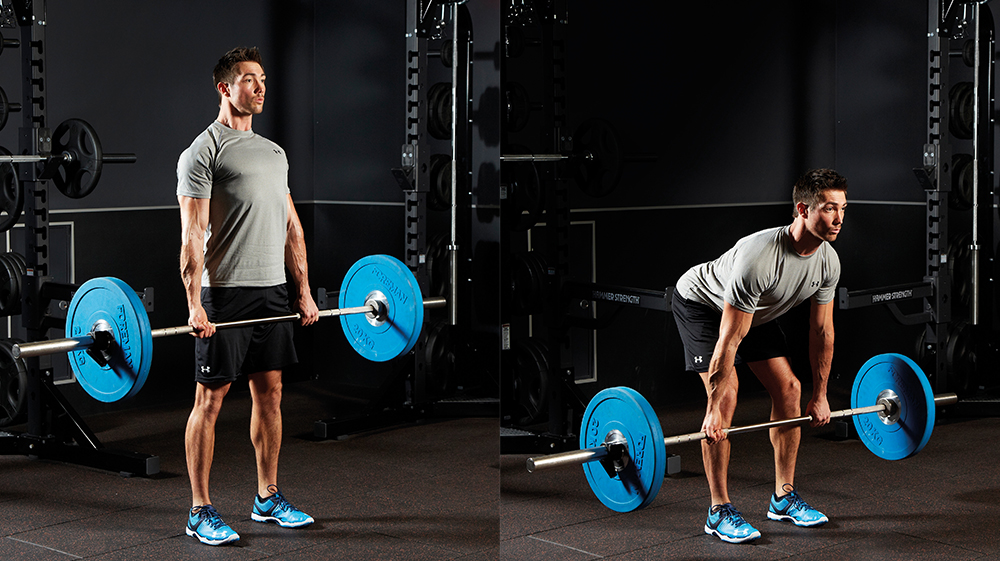
Sets 4 Reps 6-8 Rest 60sec
Why After your heavy deadlift sets this is a good way of developing the hamstring strength needed to improve your deadlift. It’s technically a lot easier than the deadlift so you’ll be able to go reasonably heavy even when your muscles are tired.
How Hold a barbell with an overhand grip just outside your thighs. Hinge at the hips to send the bar down the front of your thighs, ensuring that the bar stays close to you throughout the lift. Lower until you feel a strong stretch in your hamstrings, then straighten back up and contract your glutes at the top of the move.
4 Hip thrust
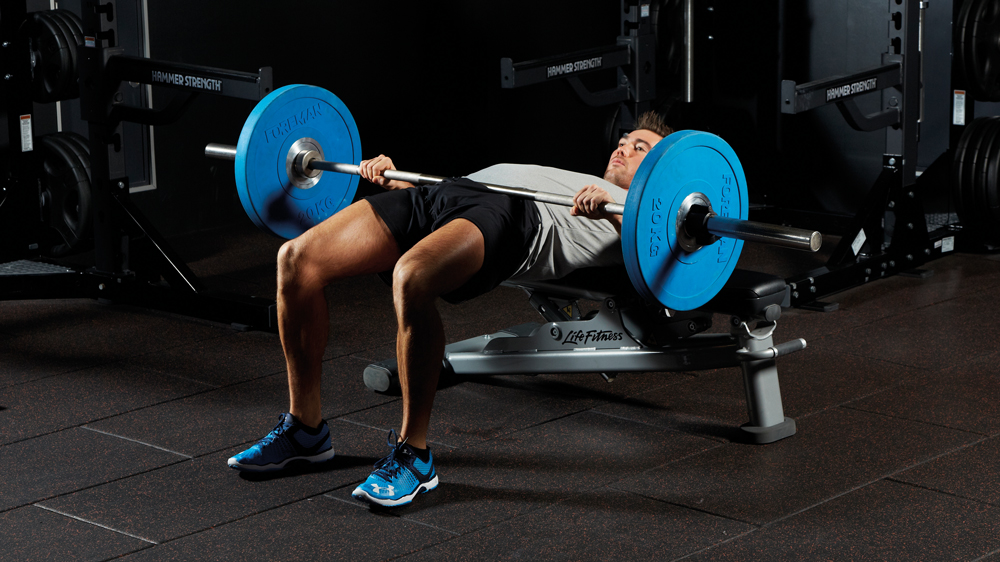
Sets 3 Reps 10 Rest 60sec
Why Strong glutes are vital for a big deadlift and this move targets them directly.
How Rest your upper back on a bench and hold the barbell on your hips. Push your hips towards the ceiling as far as you can while squeezing your glutes together. Lower your hips under control, then repeat.
5 Bent-over row
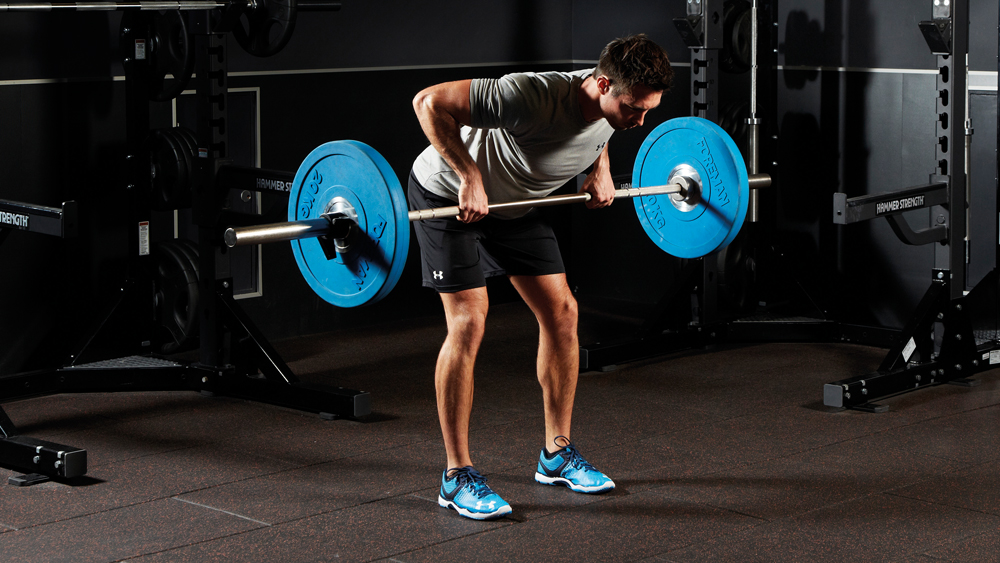
Sets 3 Reps 10 Rest 60sec
Why You can’t hit a big deadlift if you have a weak back and this move is great at strengthening your larger back muscles.
How Hold a bar with an overhand grip and bend at the hips to let the bar hang down at knee height. Pull your elbows back to bring the bar up to your bellybutton, then lower back to the start.
Workout 3: Overhead Press
1 Kettlebell press
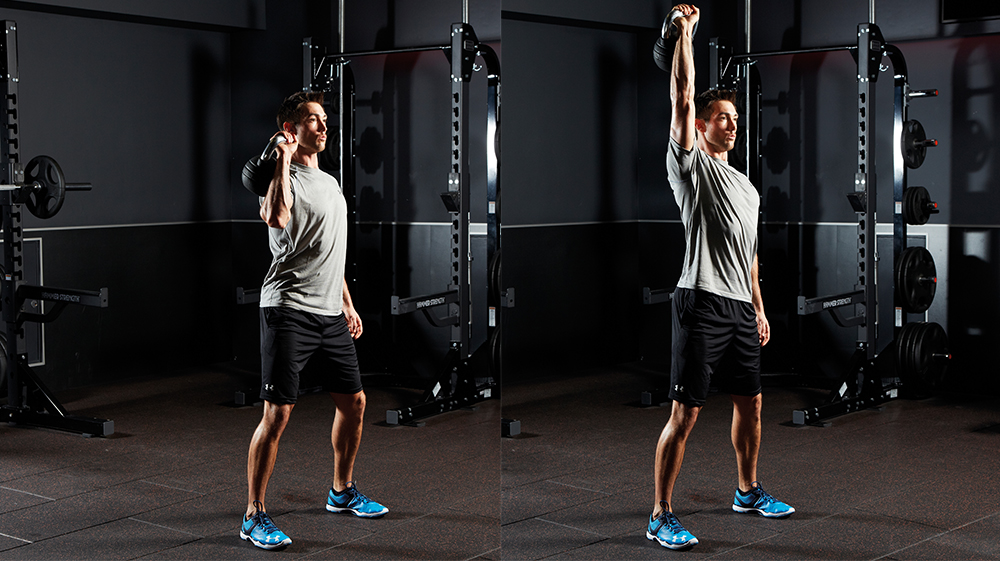
Sets 3 Reps 5 each side Rest 45sec
Why This move will warm up your shoulder joint, which is a complex joint and can get injured easily. The single-sided nature of the move means that your stabilising muscles must activate to control your movement.
How With your elbow below your wrist and the kettlebell resting on the back of your wrist, press the weight directly overhead. Lower back to the start under control. Swap sides after five reps.
2 Overhead press
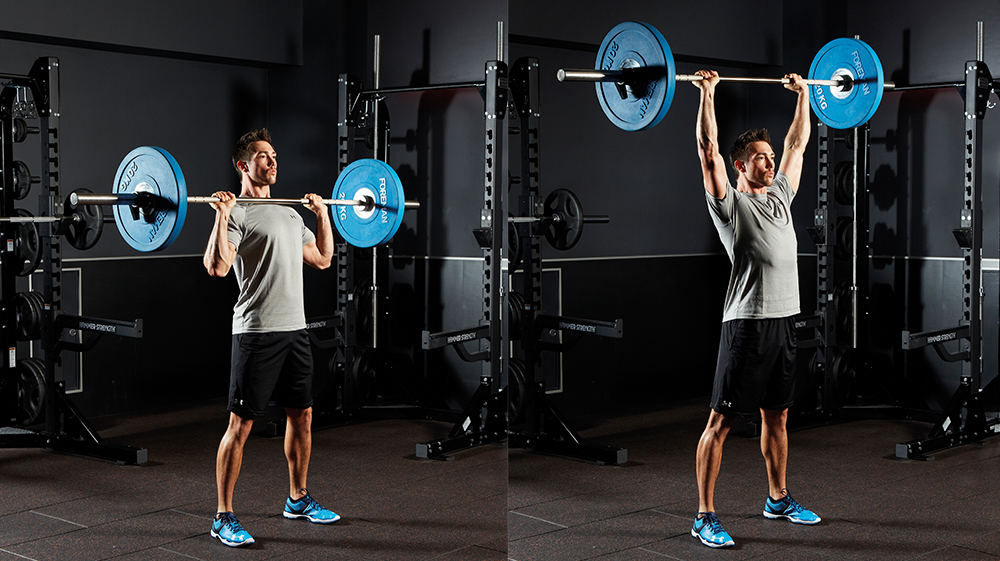
Sets 5 Reps 5 Rest 90sec-2min
Why Being able to press a heavy weight overhead is a good sign that you have structural integrity in your shoulders and upper spine as well as good core strength.
How Start with the bar on the front of your shoulders with a grip that’s just wider than shoulder width. Squeeze your glutes to give yourself a stable base and to activate your core, then press the weight overhead. Lower under control. Only lower the bar to just below chin height to avoid internally rotating and overstressing your shoulders.
3 Push press
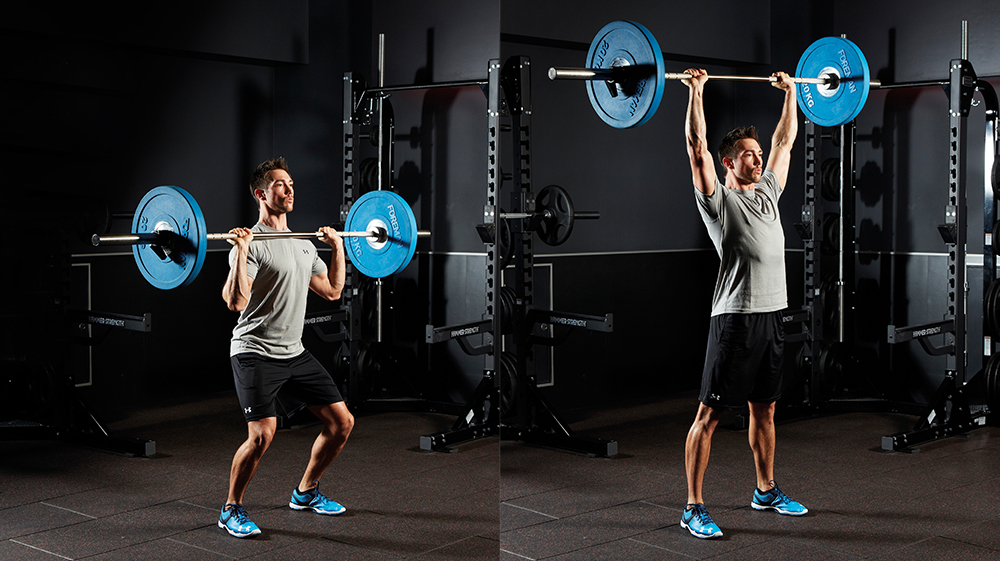
Sets 3 Reps 10 Rest 60sec
Why This exercise is a good way of fully fatiguing your shoulders after they’re no longer able to complete strict overhead press reps.
How Start with the bar on the front of your shoulders with a grip that’s just wider than shoulder width. Bend at the knees slightly, then straighten up and use the momentum to assist pressing the bar overhead. Lower under control.
4 Barbell roll-out
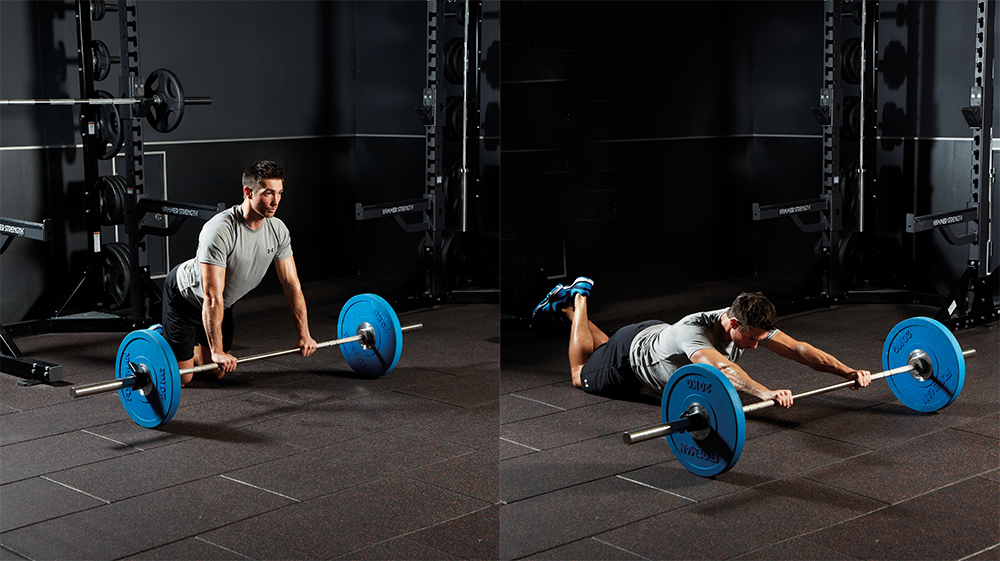
Sets 3 Reps 6-8 Rest 60sec
Why A good overhead press requires you to be strong in the core, particularly when your arms are above your head. This dynamic movement mimics that position to give you a direct abdominal strength benefit.
How Start on your knees with your shoulders above the bar and your arms straight. Contract your abs, then roll the bar out in front of you. Go as far as you can, then roll the bar back to the start.
Photography: Ben Knight; Model: Greg Cornthwaite
Coach is a health and fitness title. This byline is used for posting sponsored content, book extracts and the like. It is also used as a placeholder for articles published a long time ago when the original author is unclear. You can find out more about this publication and find the contact details of the editorial team on the About Us page.

